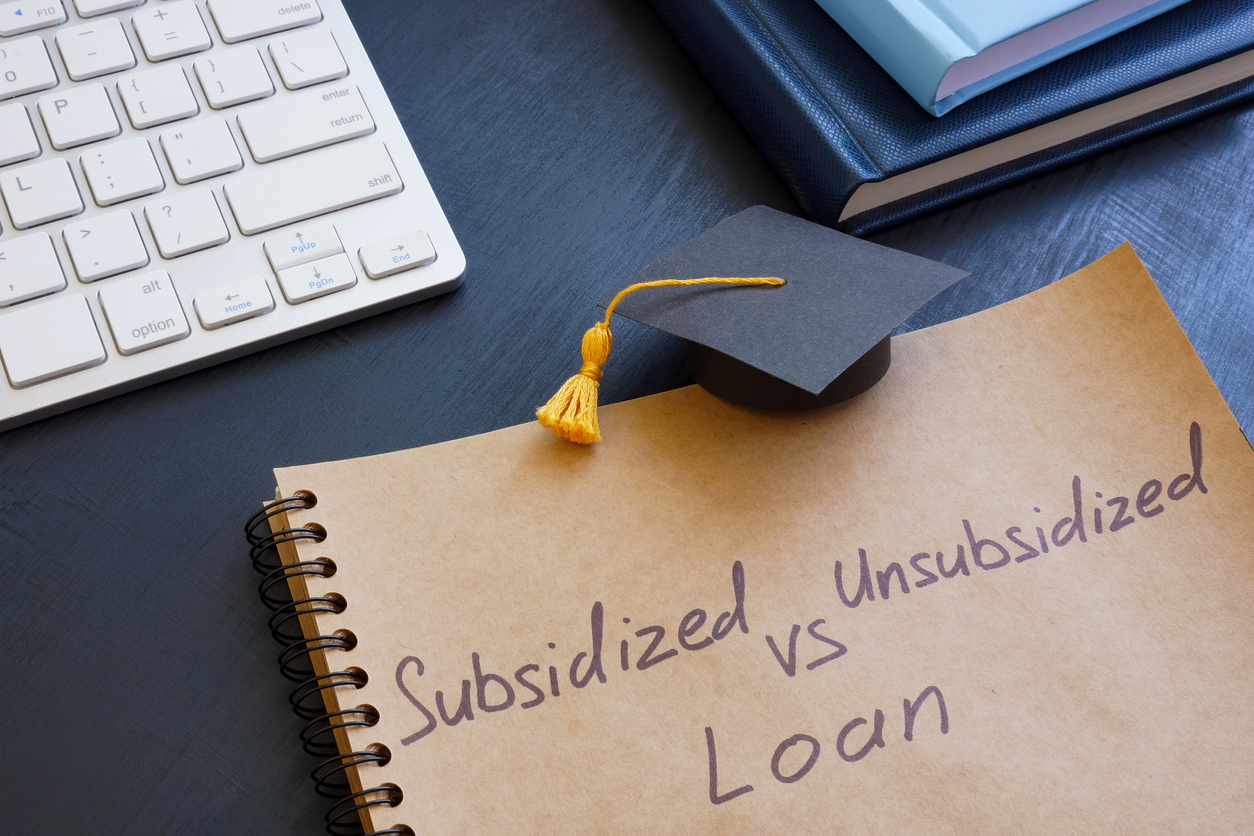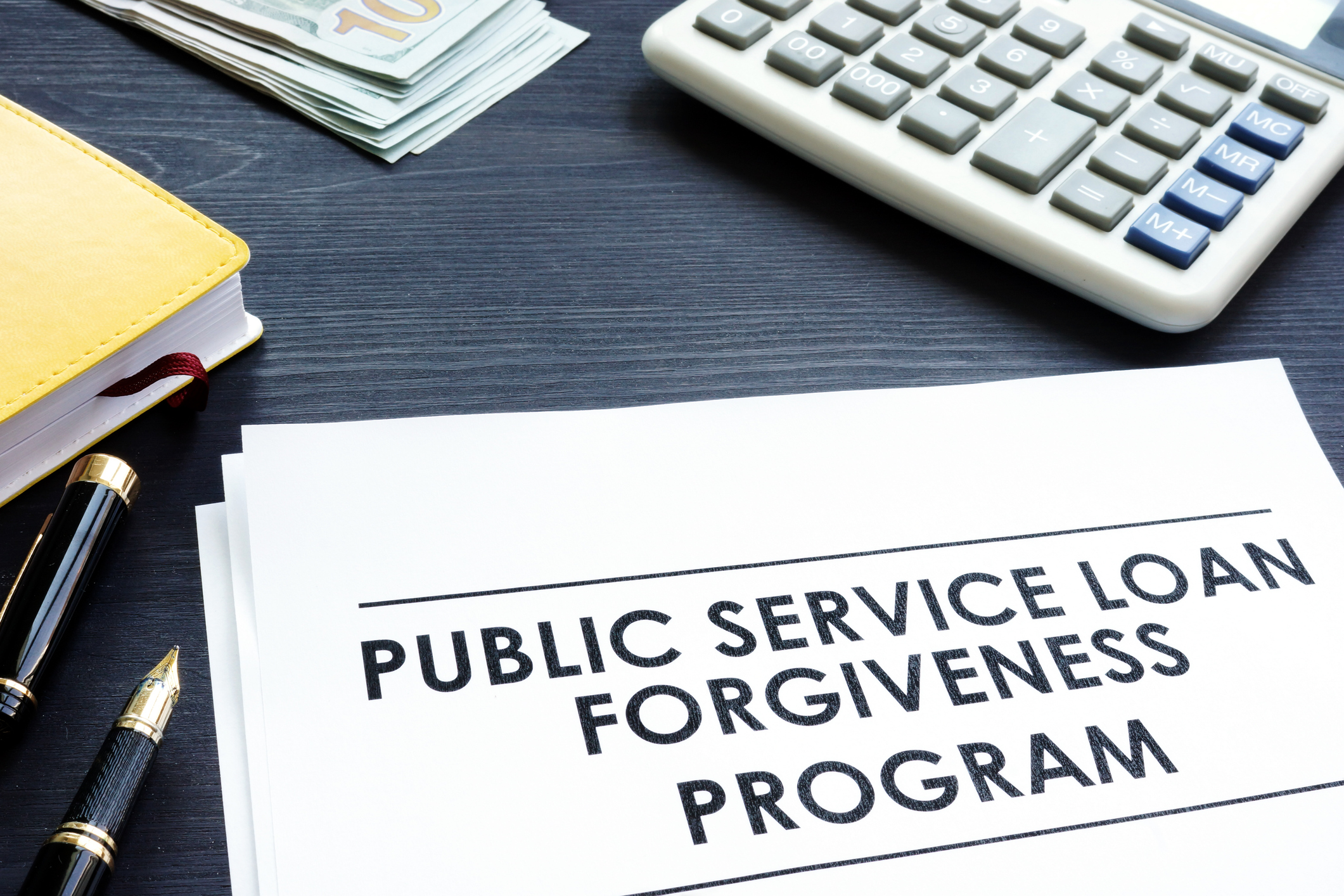College is an investment in your future, but the rising costs can be daunting. Many students feel that student loans are the only option to “fund their gap” – meaning, to cover their out-of-pocket costs after getting their financial aid offer. But before you go that route, it’s crucial to understand the realities of student loan debt and explore other options for covering that gap.

The reality of student loan debt
Federal student loans can feel like “easy money.” After all, literally anyone who is a U.S. Citizen or Permanent Resident can access federal student loans, no credit check required. But these “easy loans” come with long-term consequences. Here’s what you need to know:
Student loan interest

Win more scholarships with less effort
Simplify and focus your application process with the one-stop platform for vetted scholarships.
Check for scholarshipsWhen you agree to take out federal student loans, you are also agreeing to repay those loans with interest. This can significantly increase the total cost of your education. The interest rate you’ll pay depends on when you took out the funds, and that interest rate changes year to year. So if you are taking out federal student loans for every year you are in college, that means your interest rate will be different for each year you borrowed the money.
Speaking of interest, it is important to understand what it means to take out a “subsidized” student loan vs. an “unsubsidized” student loan:
- Subsidized federal student loans are available to undergraduate students with financial need. For these loans, the U.S. Department of Education pays the interest on the debt while you are in school, during deferment periods, and during a six-month grace period after you graduate or leave college.
- Unsubsidized federal student loans are available to both undergraduate and graduate students, and these loans are not need-based. When you take out unsubsidized federal student loans, you are responsible for paying all of the interest on these loans, even while you are in school. You can make interest-only payments and/or principal and interest payments while you are in school OR you can defer beginning your payments until six months after you graduate or leave college. But note that when you defer the interest and/or principal and interest payments, you’ll still be the one paying all of that accrued interest that happened while you were in school.
Student loan repayment

Loan repayment can last for many years, impacting your financial freedom to pursue other goals like buying a home or starting a family. In fact, the average borrowed takes 20 years to repay their student loans! You might think, “that won’t happen to me” but unfortunately, there is a good chance that it will. With the cost of housing, utilities, insurance, food and other essentials increasing, you might find yourself in the same place as many of your peers – paying on your loans for 20 years.
Trump Administration student loan policies
Recent changes in federal policy have made student loan debt even more precarious. The current administration has taken steps to aggressively collect on past-due loans, limit loan forgiveness programs, and reduce the availability of income-driven repayment plans. This means that borrowers face a higher risk of default and may have fewer options for managing their debt. Consider what this means to borrowers today:
Resumption of student loan collections

In May 2025, the Trump Administration initiated the resumption of federal student loan collections, particularly for those in default. This marks a significant shift, as there had been a lengthy period of forbearance that began during COVID. While loan payments did eventually resume, the Biden Administration allowed for an “on-ramp” period to enable borrowers to get back on track, and during this period, loan servicers were not able to report delinquent payments to credit bureaus. With the new collections action being taken by the Trump Administration, delinquent borrowers may face wage garnishment, tax refund offsets, and other collection actions.
Changes to Income-Driven Repayment (IDR) Plans

There have been fluctuations and legal challenges regarding IDR plans, including the Saving for a Valuable Education (SAVE) plan. These changes have created some uncertainty for borrowers regarding their repayment options. There have been efforts to streamline IDR enrollment, but the process has been bumpy. Currently, the Trump Administration is offering four repayment plan options:
Standard repayment plan
All borrowers will automatically be placed into the standard repayment plan, which provides a fixed monthly payment that guarantees that your loans will be repaid in 10 years. Depending on your financial situation and the amount you borrowed, you may find that the payment amount on the standard plan is hard for you to manage. If that is the case, you can opt-in to one of the other available plans.
Income-based repayment plan
All borrowers of subsidized and unsubsidized federal student loans as well as Family Federal Education Loans (FFEL) are eligible to select this income-based repayment (IBR) plan. With IBR, your monthly payment amount will be 10% of your discretionary income if you borrowed the funds after July 01, 2014, or 15% of your discretionary income if you borrowed the funds prior to that date.
Note that your loan servicer determines your discretionary income to be the amount you earn over 150% of the federal poverty guideline for your location and household size. For a single person in the contiguous U.S., that would be $35,213 in 2025. According to CNBC, if you are single and earn $75,000 per year, you can expect to pay approximately $185 per month on this plan. In addition, the amount of your IBR payment will never exceed would you would have paid on the standard plan.
Income-contingent repayment

Federal subsidized, unsubsidized and consolidated loans are eligible for the income-contingent repayment (ICR) plan. With the ICR plan, your monthly payment will be calculated as 20% of your discretionary income, wbich is equivalent to approximately what you would pay on a 12-year fixed repayment plan, adjusted using a formula based on your income. Note that with this plan, your discretionary income is your income above 100% of the poverty guideline.
Pay As You Earn
If you are a borrower with a federal subsidized, unsubsidized or consolidated loan, you may also qualify for the Pay as You Earn (PAYE) plan, provided you meet the following criteria:
- Had no outstanding balance on a Direct or FFEL loan when you received a Direct Loan or FFEL Program loan on or after Oct. 1, 2007
- Must have received a Direct loan — subsidized, unsubsidized or direct PLUS loan — disbursement on or after Oct. 1, 2011 or a Direct Consolidation loan based on an application that was received on or after that day
Your monthly payment is calculated as 10% of your discretionary income, which is your income over 150% of the poverty guideline (similar to the IBR plan). Your payment on will not be higher than it would be if you were on the standard 10-year repayment plan.
Department of Education changes
There have been moves to reorganize the Department of Education, including proposals to transfer the administration of federal student loans to other agencies, such as the Small Business Administration (SBA). These proposed changes have raised concerns about potential disruptions to loan servicing and borrower protections.
Public Service Loan Forgiveness (PSLF)

The administration has taken actions to redefine eligibility for the PSLF program via an executive order on March 07, 2025, with a focus on excluding organizations deemed to have “illegal purposes.” This has changed the landscape of who can have their loans forgiven through public service. This executive order targets organizations involved with immigration, gender-affirming care and organizations involved in protests and other forms of activism. Depending on your future employment plans, this could impact your eligibility for PSLF. Note that as of right now, Federal Student Aid is in the process of reviewing this executive order, but no official changes have been made as of yet regarding which specific employers may be impacted by this order.
General policy shift
Overall, the Trump Administration’s approach has signaled a move away from broad student loan forgiveness and a stronger emphasis on loan repayment.
The pitfalls of student loans

Taking on student loan debt can lead to several pitfalls:
Financial stress
The burden of student loan payments can cause significant stress and anxiety, especially after graduation when you’re trying to establish your career.
Limited financial choices
High monthly payments can restrict your ability to save, invest, or make other important financial decisions.
Student loan default
Failing to repay your loans can damage your credit score, making it difficult to secure loans, rent an apartment or buy a home, or even get a job in the future.
The ever-changing student loan and financial aid landscape
As mentioned earlier, governmental policies regarding student loans can change, adding uncertainty to the repayment process.
Debt-free alternatives: Your path to financial freedom

The good news is that student loans aren’t the only way to finance your education. Consider these debt-free alternatives:
Scholarships and grants
Scholarships and grants are free money that doesn’t have to be paid back.
- To apply for need-based grants, be sure to submit the Free Application for Federal Student Aid (FAFSA) for every year you’ll be in college.
- You’ll find tons of merit / theme-based scholarships on the ScholarshipOwl platform! These scholarships are not based on financial need, so you’ll find numerous opportunities that you’ll be eligible for!
- Need-based and merit scholarships are also offered directly by colleges, as well as in your community so be sure you explore these options as well.
Income from a job
Working part-time during school or full-time during breaks can help you cover expenses. Look for on-campus jobs, internships, or summer employment opportunities. Checkout online application options through Snagajob, Indeed, LinkedIn, and your college’s job search site. Remember to balance your time between work and school so that your job doesn’t interfere with your studies.
Income from a side hustle

Whether you already have a job or not, you can also earn income from a side hustle! There are so many options to consider, including meal or grocery delivery, driving for a ride-sharing app like Uber or Lyft, working as a handyperson, selling your wares on Etsy, and more! If you have programming/web development skills, you can create an app that earns you passive income as well.
Personal savings
Saving early and consistently can make a big difference – of course you can and should save income earned from a job or a side hustle, but you should also save gift money you’ve received for birthdays, holidays, graduation, etc. If you are able to earn an allowance for doing chores at home, save as much of that money as you can as well.
Financial support from family

Never assume that your family will be able to help pay for college – but if you think that they might be able to help, it is important to talk with them about what that might look like.
For example, have your parents / grandparents / guardians already set aside funds for your college education? If so, how much has been set aside?
Whether or not they have already set aside funds for your education, does your family feel that they can “cashflow” support while you are in school, providing assistance when tuition or housing bills are due, or perhaps helping to pay for books, or send you funds on occasion when you are struggling?
This type of conversation can be difficult and uncomfortable, but it is important that the conversation take place so that you can plan accordingly.
Choose a less expensive college

One of the best gifts you can give yourself is choosing the most affordable path to college that you can – and that begins by choosing a college that you can reasonably afford. Don’t saddle yourself with mountains of debt simply because you want to go to a private or out-of-state university.
Be sure to compare and contrast your financial aid offers and hone in on the offer that leaves you with the lowest out-of-pocket cost. And be sure that you INCLUDE any offered loans as part of that out-of-pocket cost. Colleges love to deduct the loans they are offering you to get a lower bottom-line number at the end of your aid offer. But loans are NOT free money. Loans are DEBT that you are signing onto if you decide to accept those loans.
Don’t forget that a community college is an outstanding low-cost option. You can attend a community college for two years and then transfer to a university to complete your bachelor’s degree. Employers won’t even notice or care. All they want is to see what you studied in school, and that you earned your degree or certificate.
How can you make sure you can create an affordable path to college for yourself?

Investing in your education is essential, but it doesn’t have to mean a lifetime of debt. By understanding the realities of student loans, recognizing the potential pitfalls, and prioritizing debt-free alternatives, you can pave the way for a brighter financial future. Explore all your options, be proactive, and remember that a debt-free education is within reach!
- Prioritize applying for scholarships with ScholarshipOwl. Apply for scholarships all summer long, and throughout the school year.
- Work part-time during the school year and full-time during breaks. Add a side hustle to earn extra cash. Save your earnings to use for your college education.
- Submit the FAFSA every year for every year that you’ll be in college, beginning in your senior year of high school, and continuing to submit it annually until you complete your college education.
- When you receive your financial aid offers, compare them and focus on choosing the most affordable college. If your first-choice school offered you a less financial aid and scholarships than other schools offered, contact your preferred school to see if you can negotiate your offer to one that is more affordable for you.
- Don’t “fund your gap” with student loans – use debt-free sources instead.
- Always consider starting at a community college, which offers a truly affordable option – and don’t forget that community colleges also offer federal and state grant aid, and they also offer scholarships. So even if you are planning to attend community college, always submit your FAFSA and always apply for scholarships!
REMEMBER: Student loans should always be a last-resort option for paying for college-related expenses. Focus on debt-free sources that will enable you to graduate without the burden of owing thousands of dollars for college! Focus on applying for scholarships and jobs, NOT loans, so that you can graduate debt-free. There IS an affordable path to college – for further information, and to start applying for scholarships, visit www.scholarshipowl.com.



